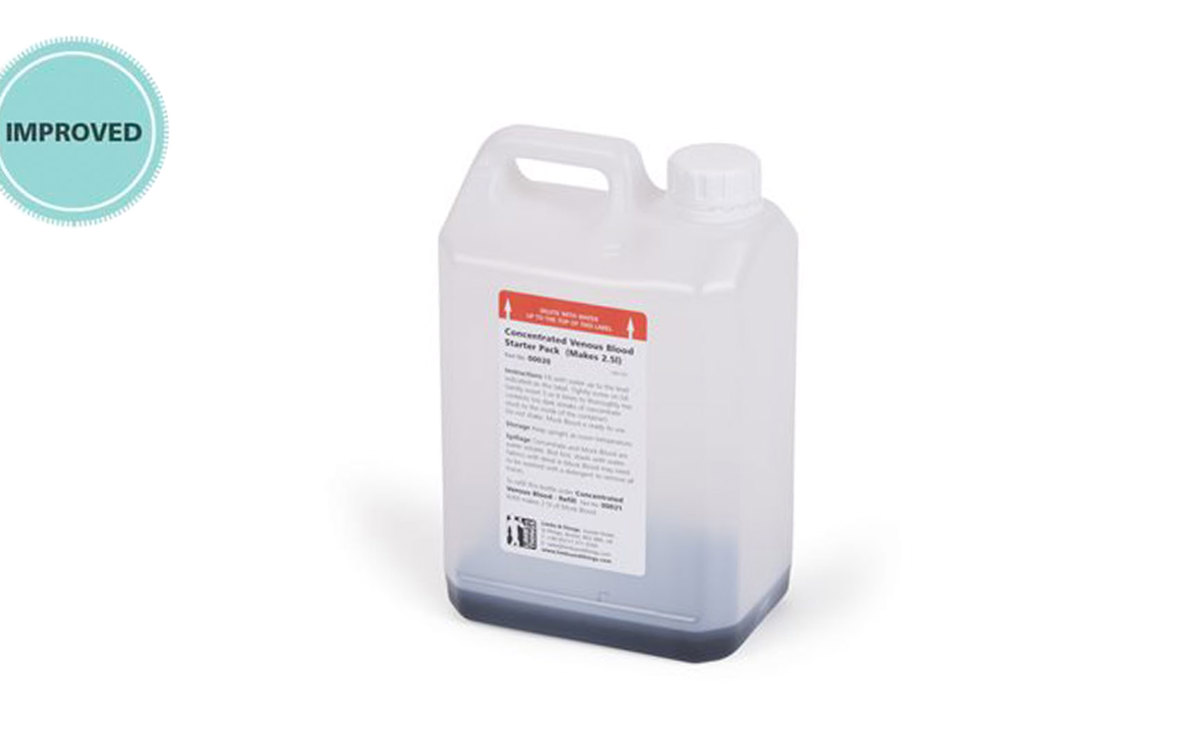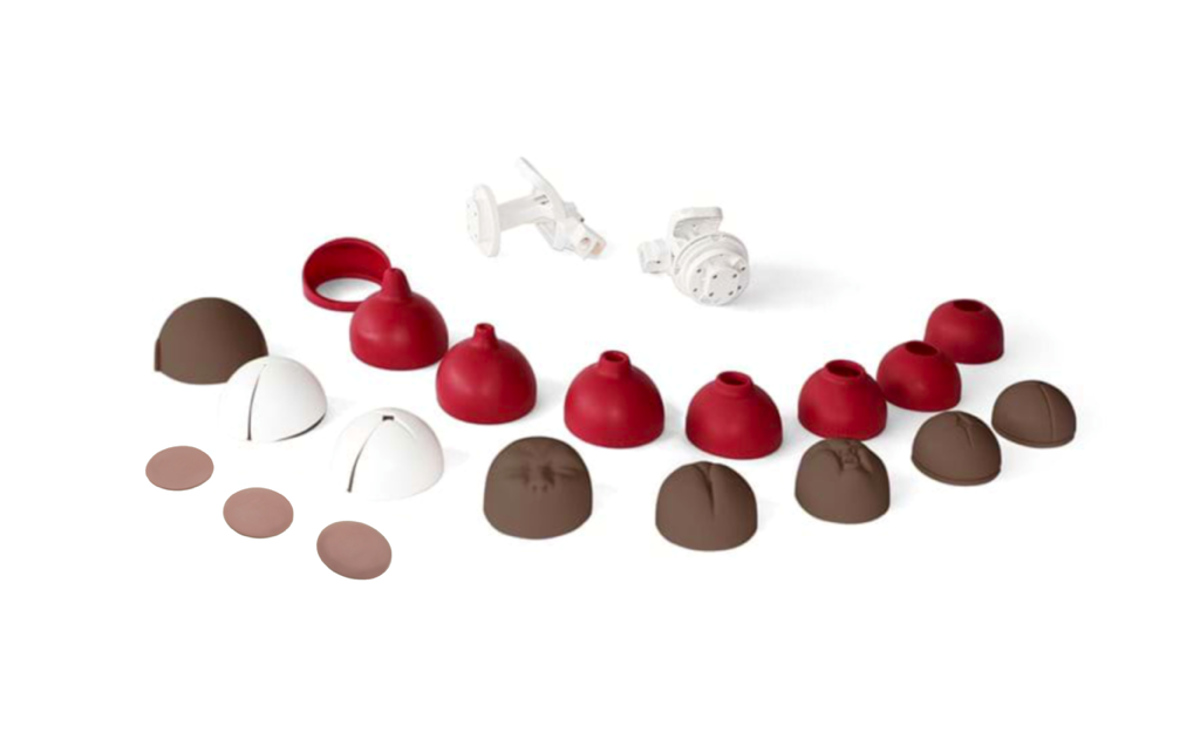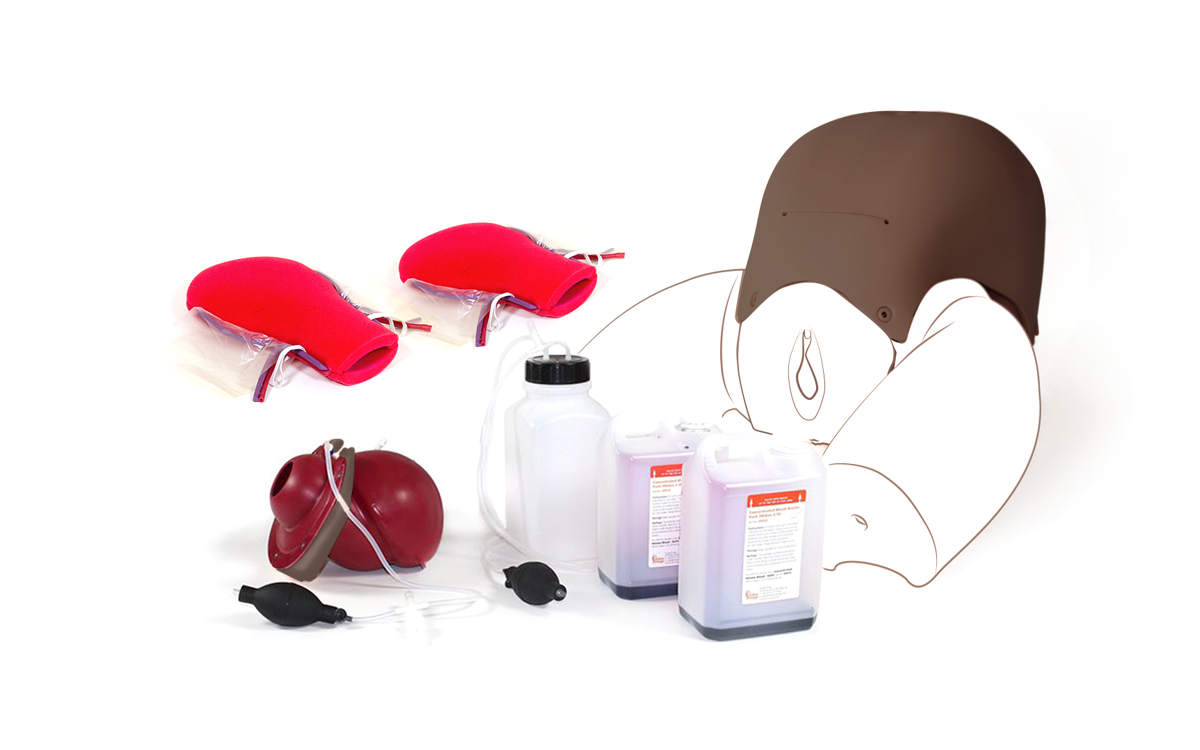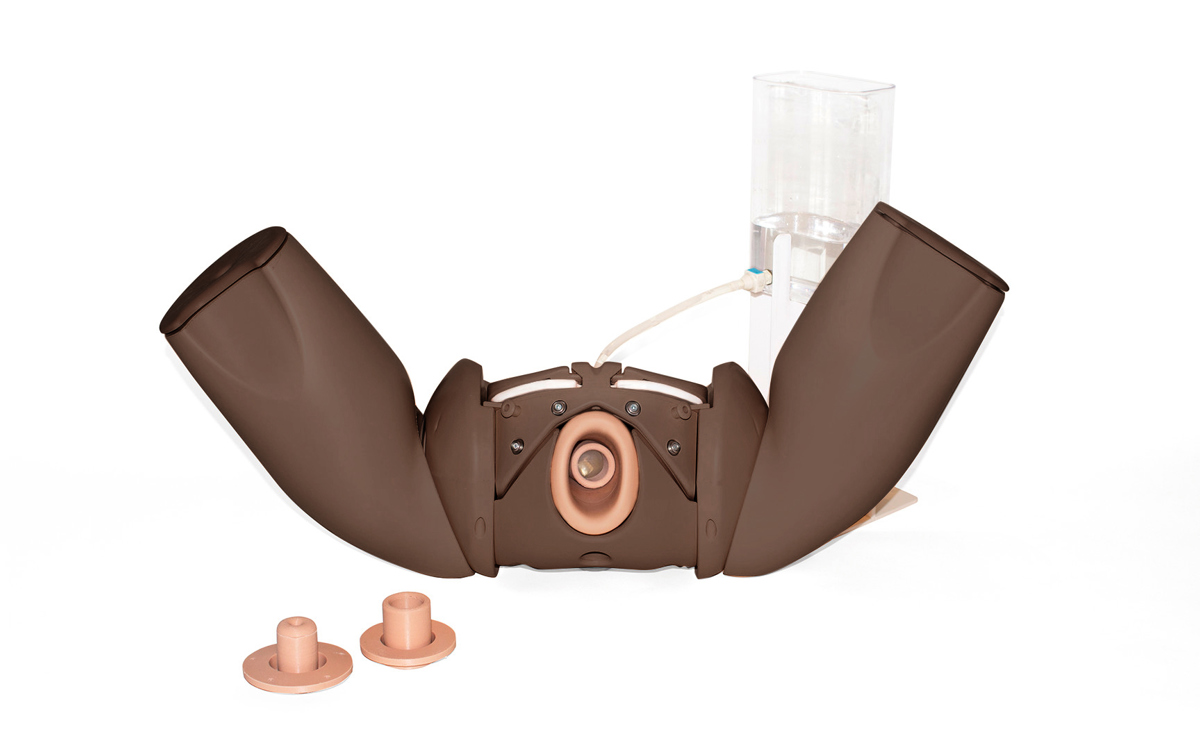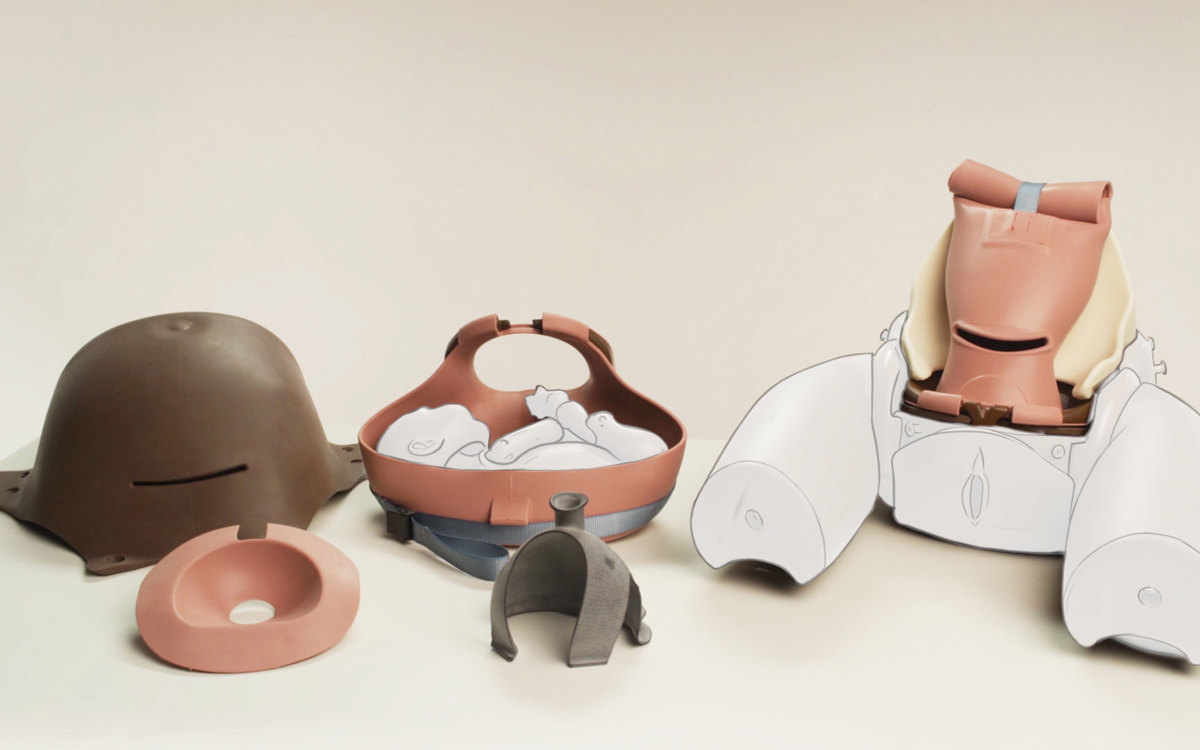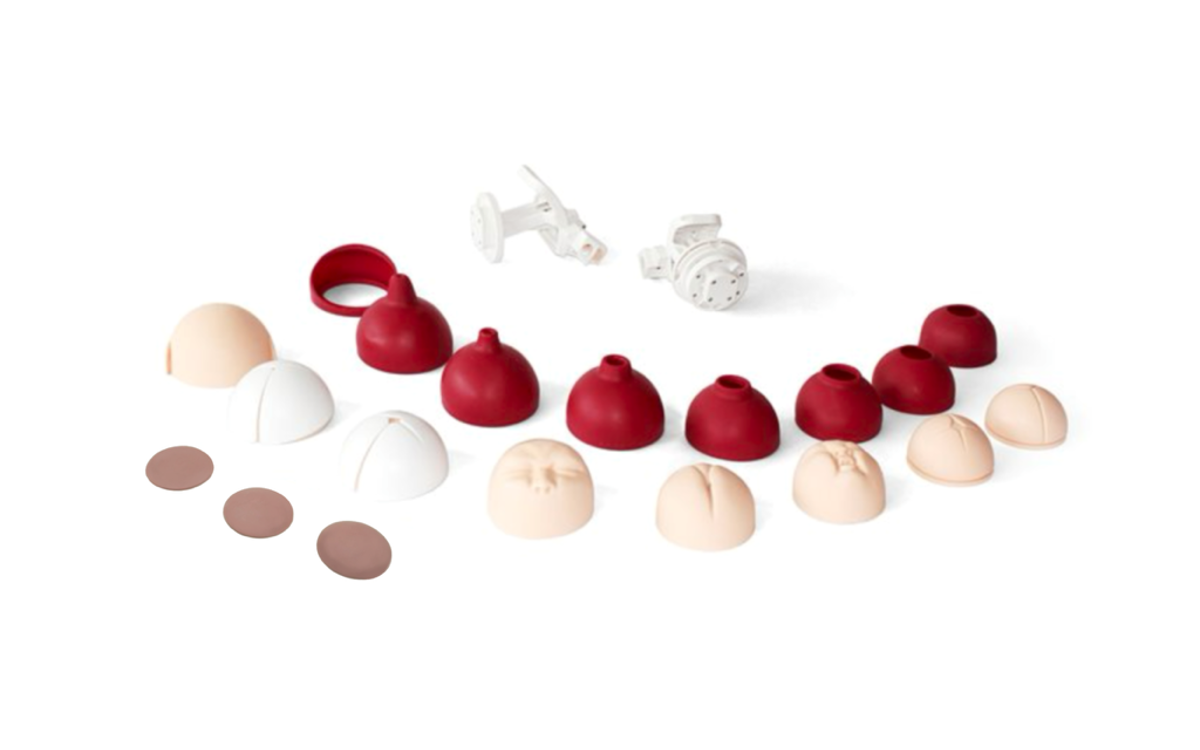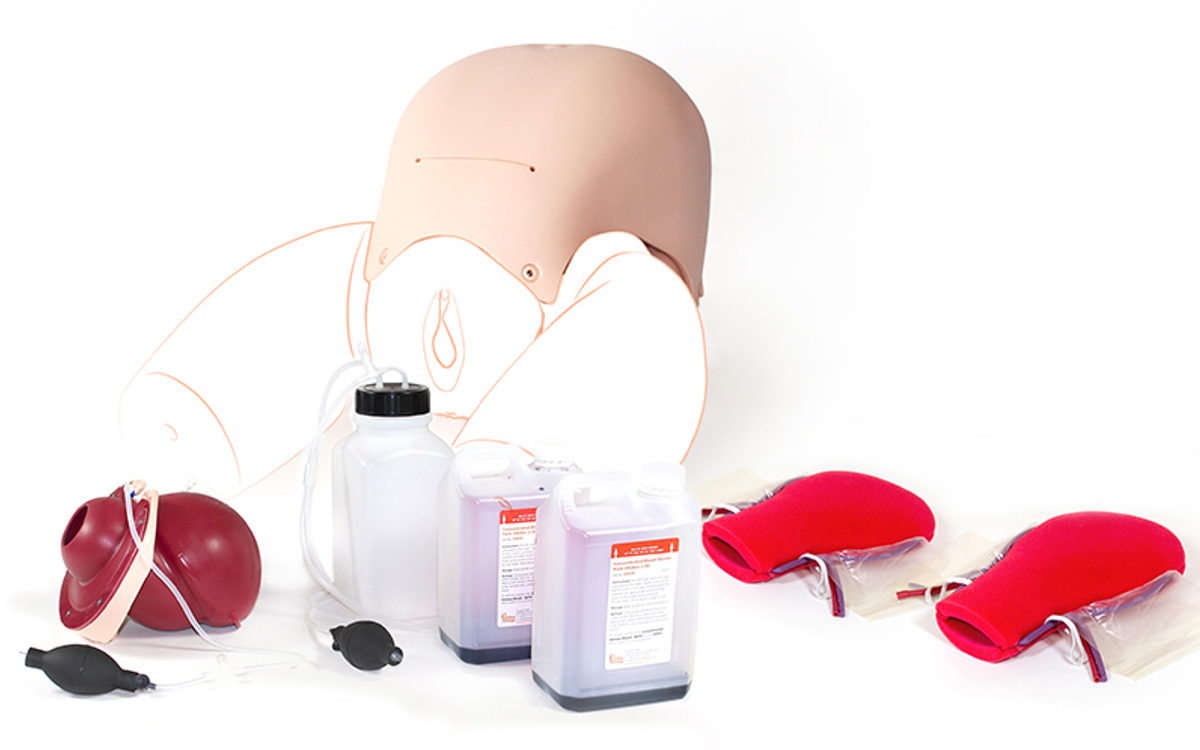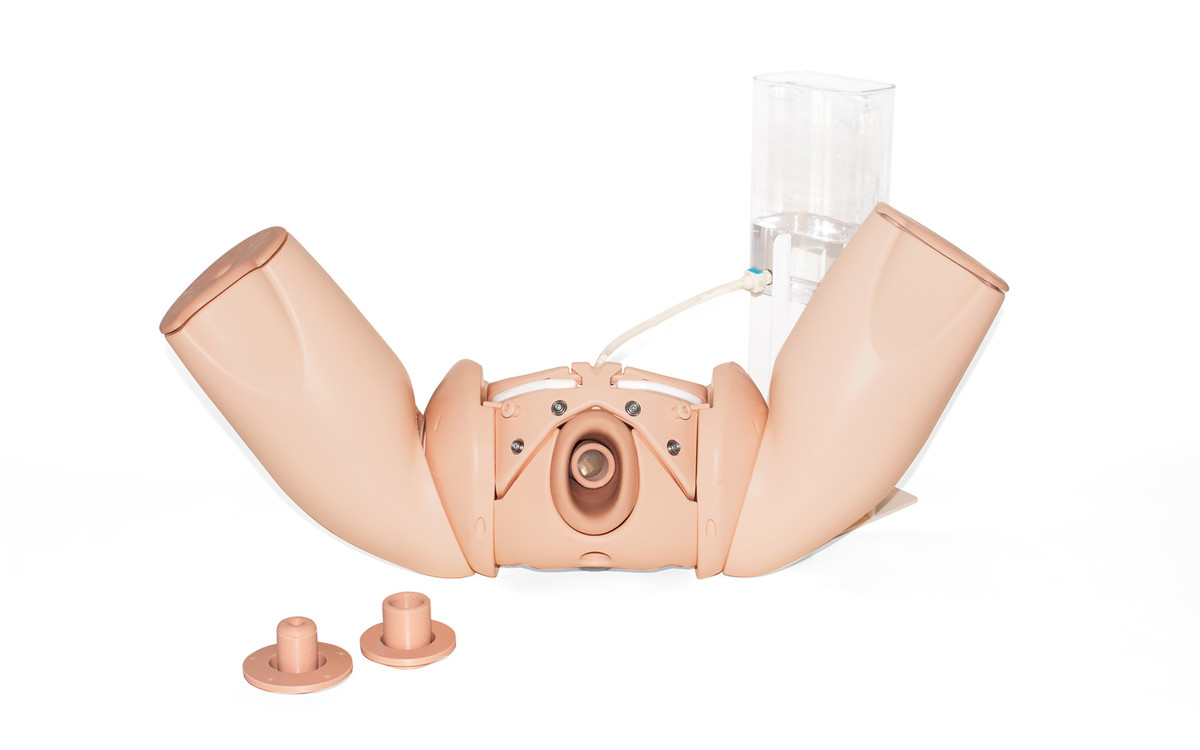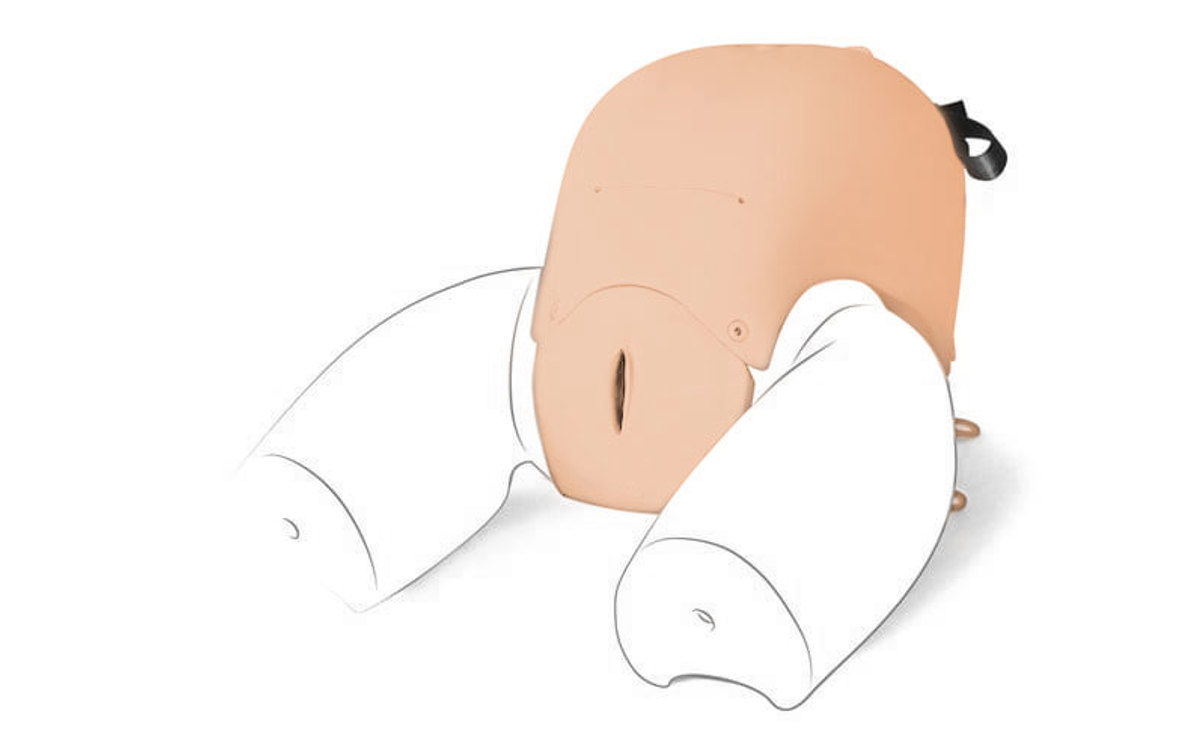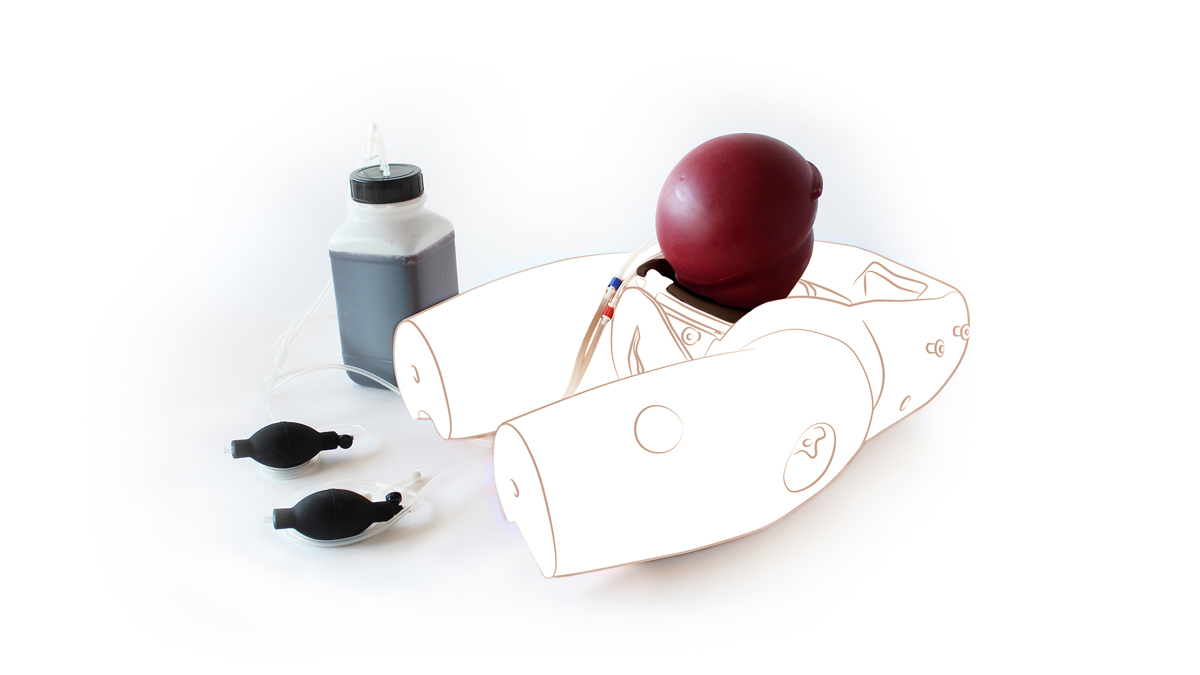
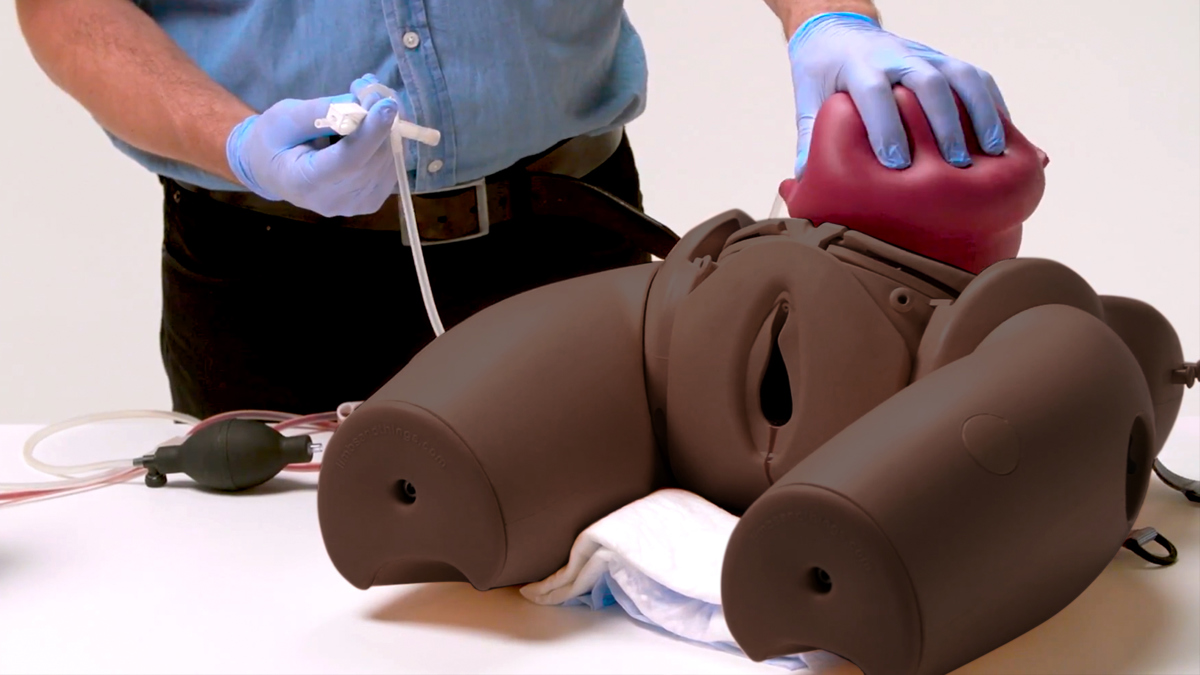
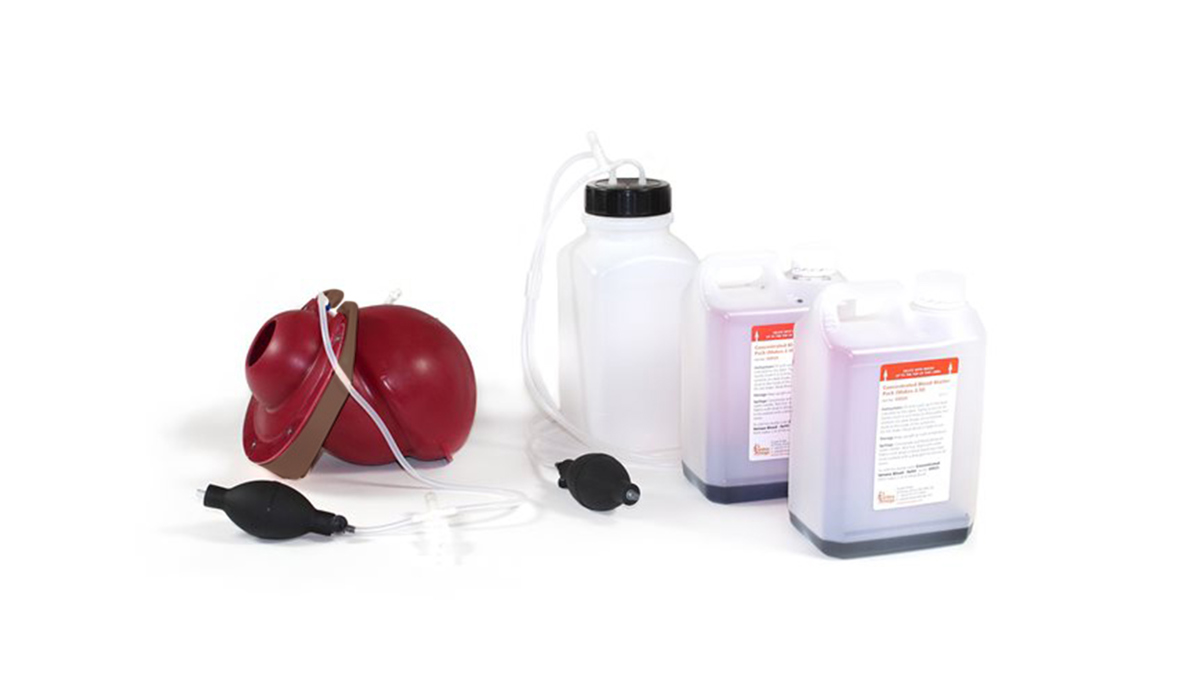

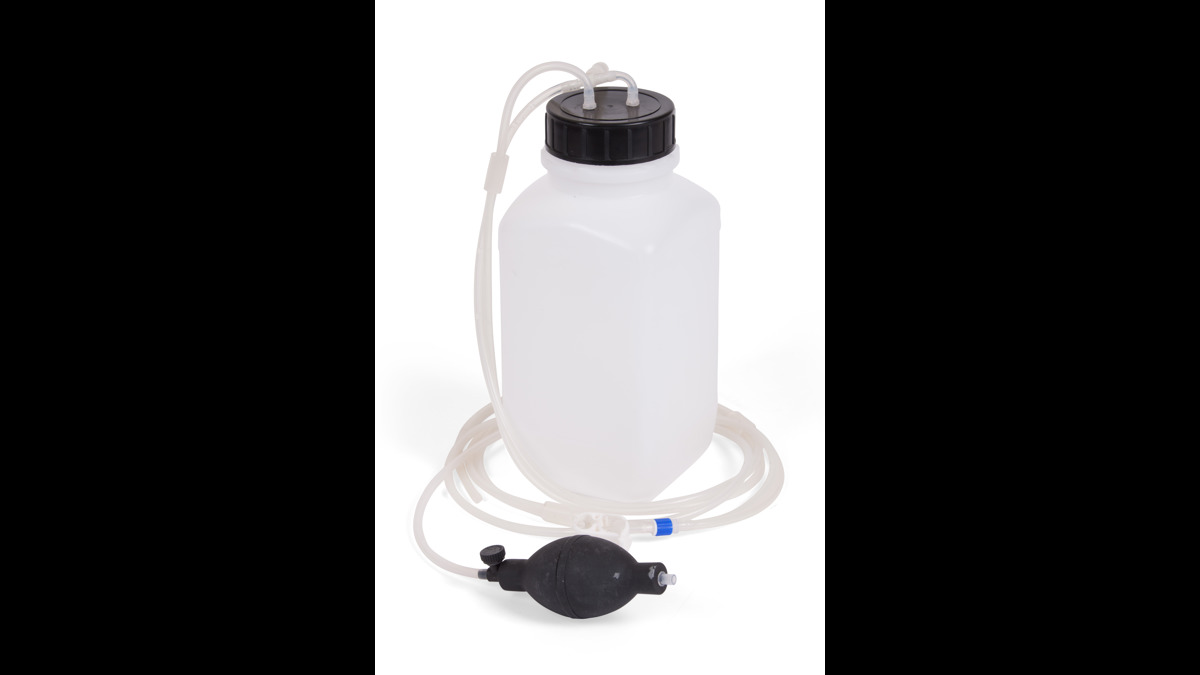
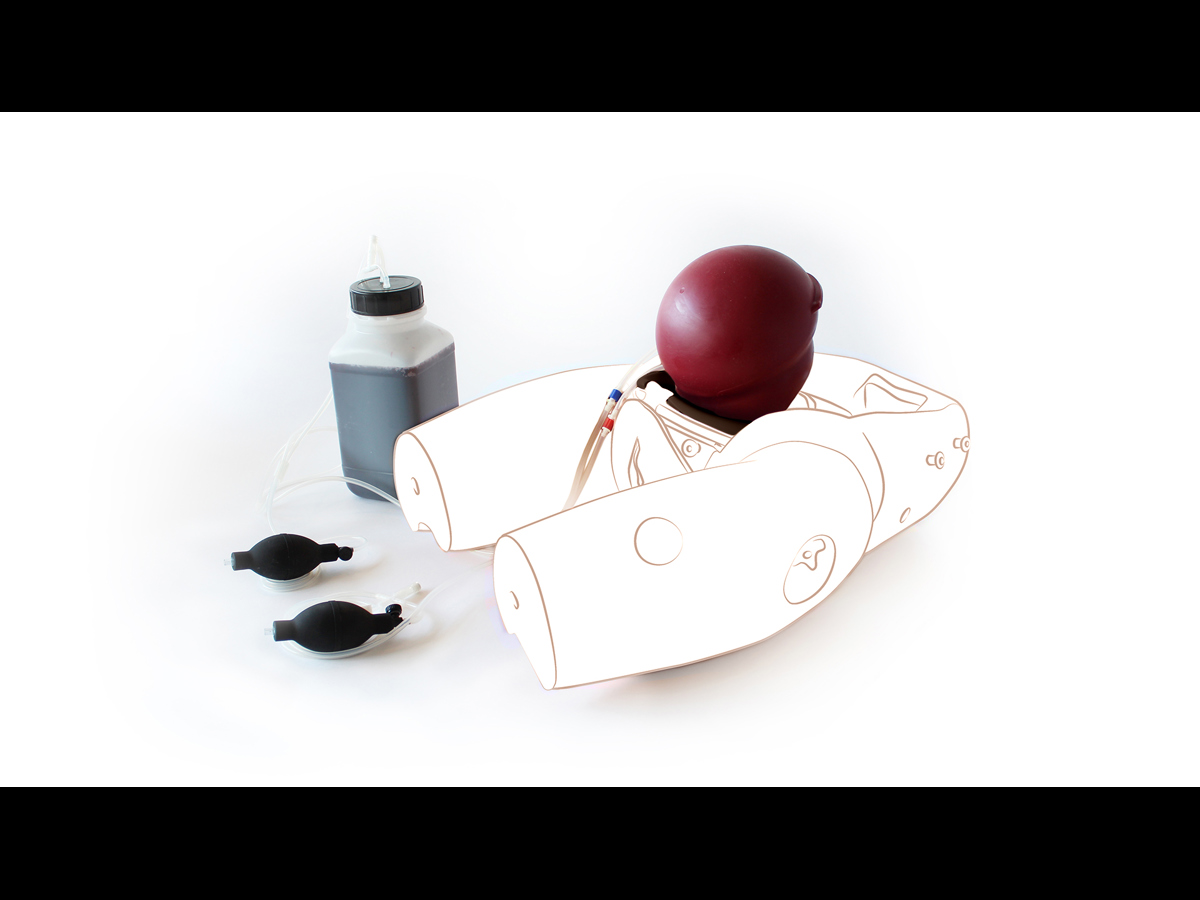
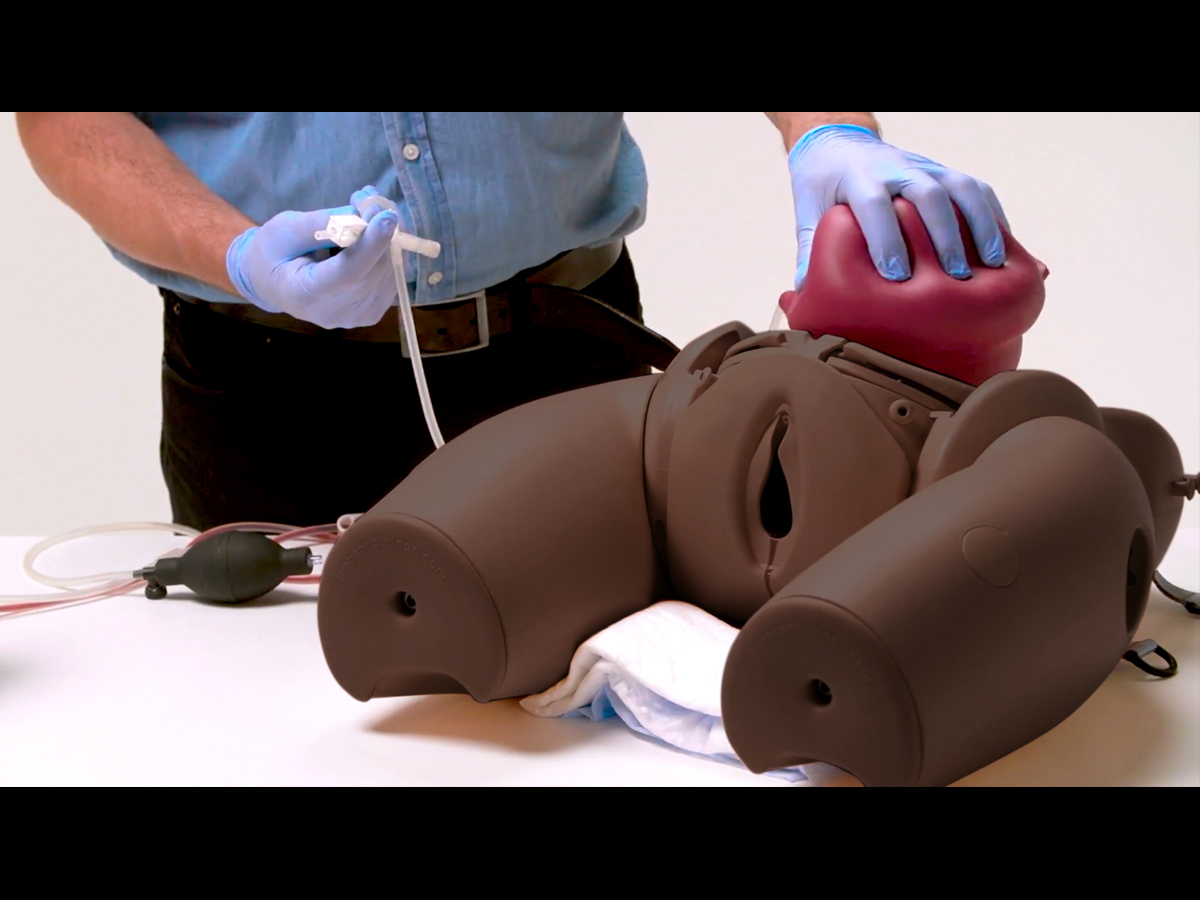
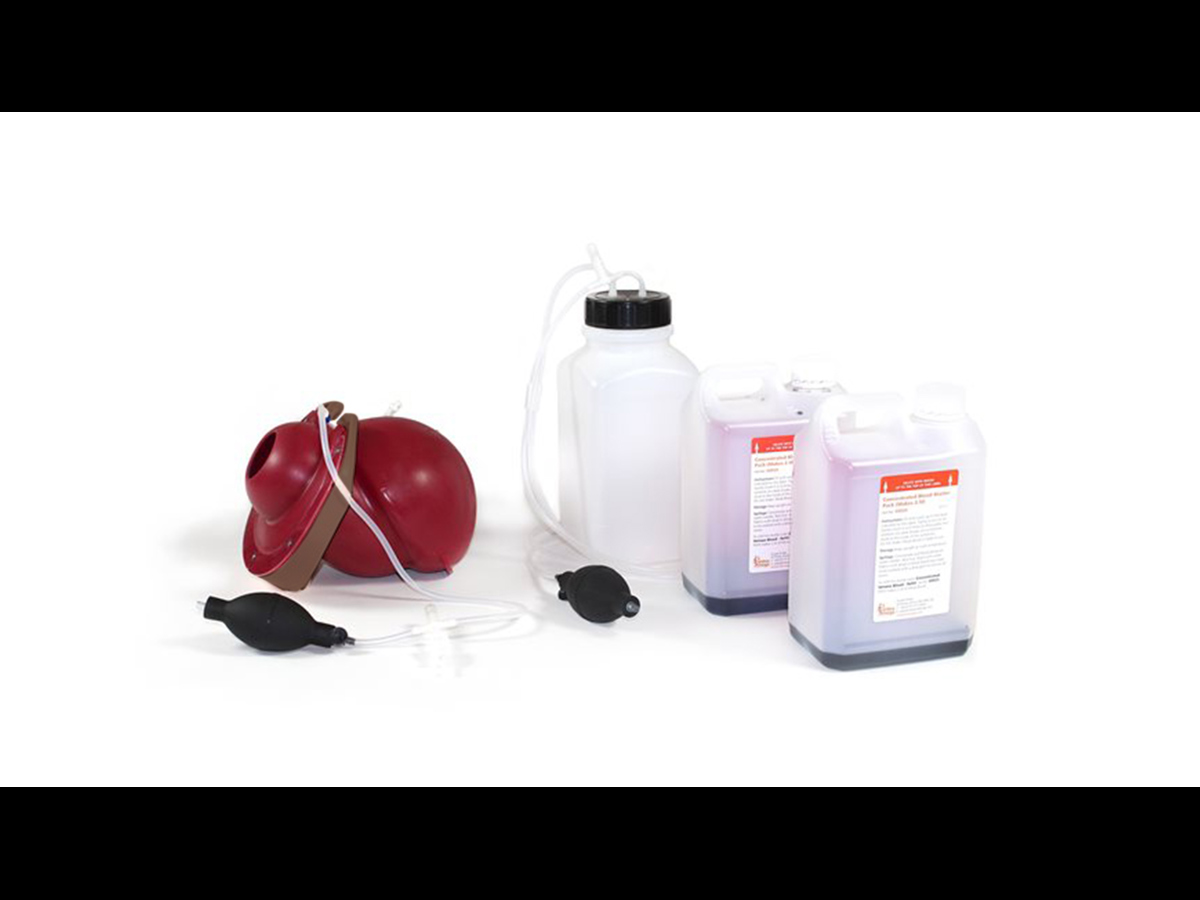

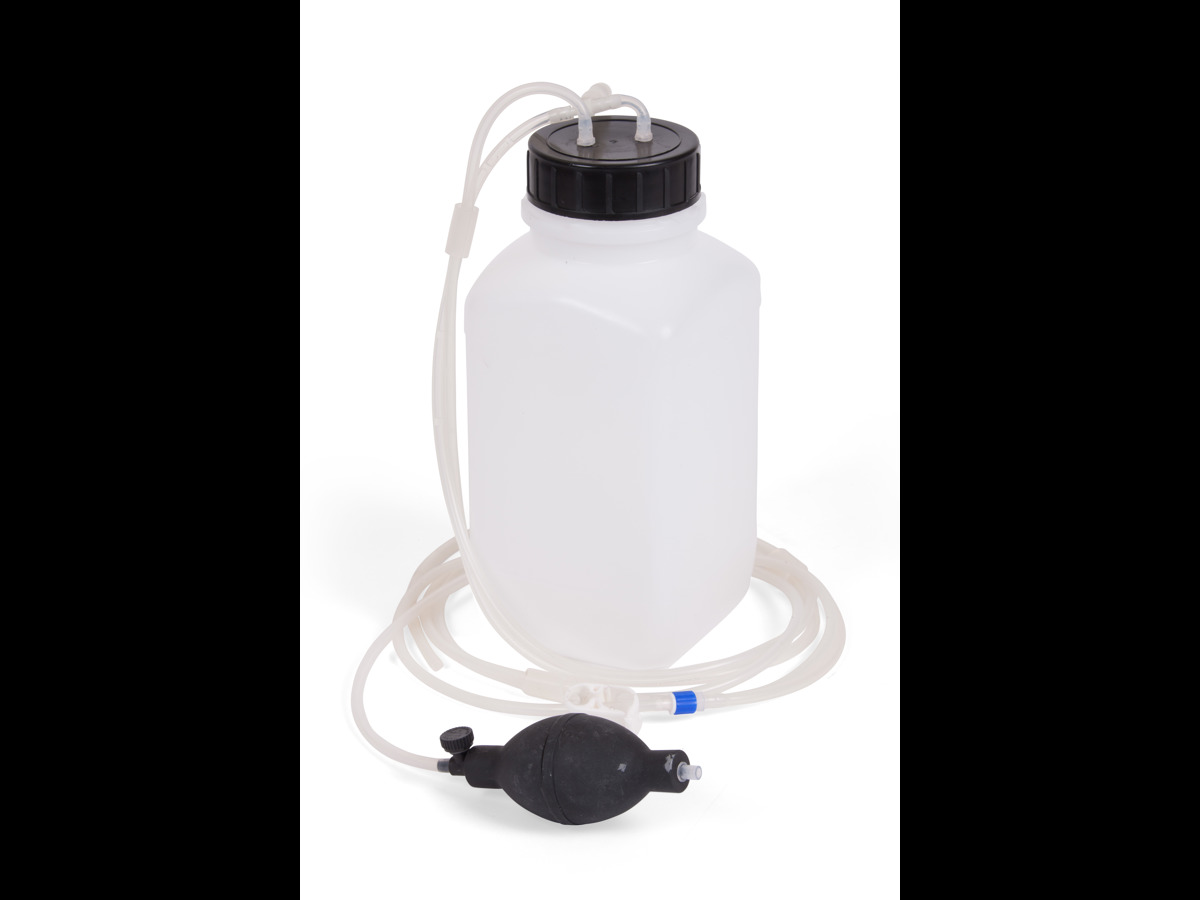
The Postpartum Hemorrhage Module is part of a selection of optional modules to extend the use of the Advanced or Standard PROMPT Flex Birthing Simulator. It is designed to allow training in the management of post-partum bleeding and offers a realistic simulation of an atonic and contracting uterus. The module is quick and easy to set up ensuring that no teaching time is lost.
There are two manual hand pumps supplied. The first pump pushes air into the uterus to allow the user to massage the uterus and mimic uterus contractions. The second is connected to a pressurised blood flow system which allows the flow of blood loss to be controlled manually simulating a hemorrhage.
The Postpartum Hemorrhage Module is part of a selection of optional modules to extend the use of the Advanced or Standard PROMPT Flex Birthing Simulator. It is designed to allow training in the management of post-partum bleeding and offers a realistic simulation of an atonic and contracting uterus. The module is quick and easy to set up ensuring that no teaching time is lost.
There are two manual hand pumps supplied. The first pump pushes air into the uterus to allow the user to massage the uterus and mimic uterus contractions. The second is connected to a pressurised blood flow system which allows the flow of blood loss to be controlled manually simulating a hemorrhage.
Postpartum Hemorrhage Module features:
Boggy uterus - Contracts when effective fundal massage is applied and provides haptic feedback to users of the success or failure of intervention.
Realistic Blood loss - Capable of demonstrating up to 2.5 litres of blood loss but is adjustable to the desired level of hemorrhaging.
Hemostatic Balloon insertion and management – Trainees are able to use a Bakri balloon which can be inserted and inflated to reduce/stop the hemorrhaging and allows a trainee to become familiar with clinical equipment
Bi-manual compression – The ability to physically contract the uterus by hand via internal compressions of the uterine wall.
Intramuscular Injections can be performed on this module
The blood used with this product now contains a new preservative which is approved for use by EU cosmetic regulations which means that, once diluted, it is safe for extended skin contact.
We still recommend the use of gloves, as the pigments may stain skin and clothes.
Overview
- Simulate and manage a postpartum hemorrhage during birth
- Offers the functionality to perform clinical procedures such as Bi-manual compressions
- Airflow adjustments using air bulbs simulate the regression of an atonic uterus.
- Adjustable blood flow rate simulates the severity of the post-hemorrhage bleed
Realism
- Atonic uterus can simulate contraction upon fundal massage
- Realistic bleed from the vaginal canal
- Palpable uterus with identifiable atonic and boggy state
Versatility
- Can be quickly and easily fitted into the birthing mother to allow simulation of situations where bleeding occurs directly after delivery
Cleaning
- Clean components with a damp sponge and mild soapy water
- Allow components to dry thoroughly before storing them away
- Artificial blood is non-staining when used correctly
Safety
- Use the recommended or provided simulated blood, other products may weaken or damage your simulator
- This product is latex free
- The blood used with this product now contains a new preservative which is approved for use by EU cosmetic regulations which means that, once diluted, it is safe for extended skin contact.
- Recommended to use gloves, as the pigments may stain skin and clothes.
Simulated Patient
- All products in the PROMPT Flex birthing range can be used with a simulated patient
Anatomy
- Uterus (can represent boggy and atonic)
Skills Gained
- Management of post-partum bleeding:
- Fundal massage
- Bi-manual compression
- Hemostatic balloon insertion and management
- Communication skills with mother when used with Simulated Patient
- Intramuscular injection
- Estimating blood loss
Product Contains
Works with the following products:
References
National Association of State EMS Officials: National Model EMS Clinical Guidelines (page. 146, 2016): Childbirth: ...recognize complicated delivery situations; apply appropriate techniques when delivery complications exist; Shoulder Dystocia, Prolapsed Umbilical Cord, Breech Birth, Postpartum Hemorrhage
AAFP Residency Guidelines, Maternity Care (p.9): Emergencies: recognize signs and symptoms of potentially life-threatening emergencies during the peripartum period .... with obstetric consultation, co-manage placental abruption/hemorrhage
RANZCOG Curriculum, 3rd Ed. (Nov. 2017) page 65 Procedural & Surgical Skills - Obstetrics; ....Management of PPH
RCOG Core Module 12: Postpartum Problems (the Puerperium) Clinical Competency: ....Primary, secondary and other postpartum haemorrhage

